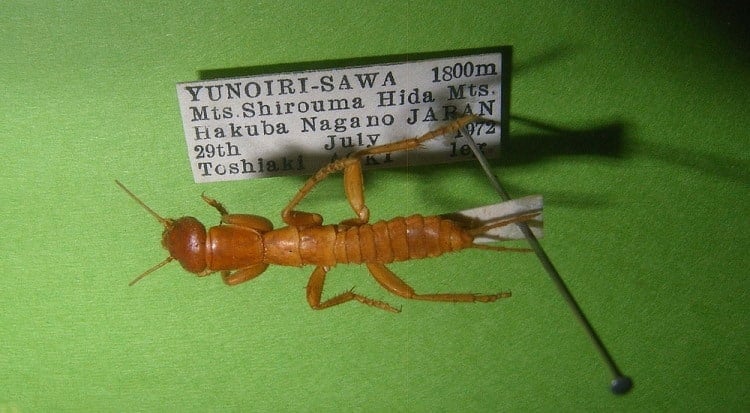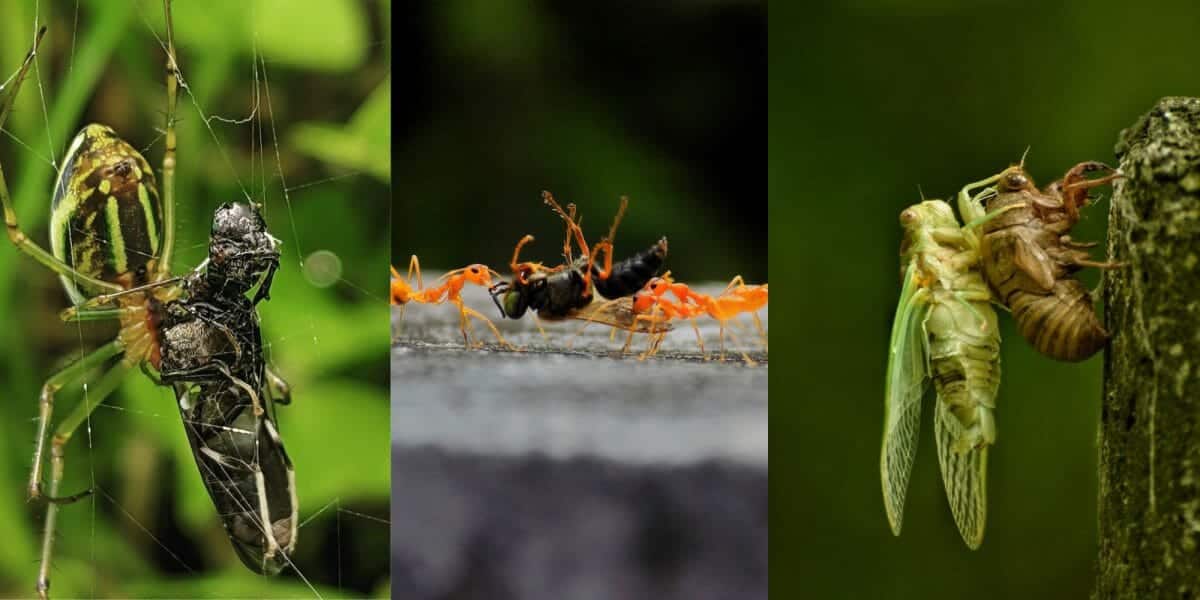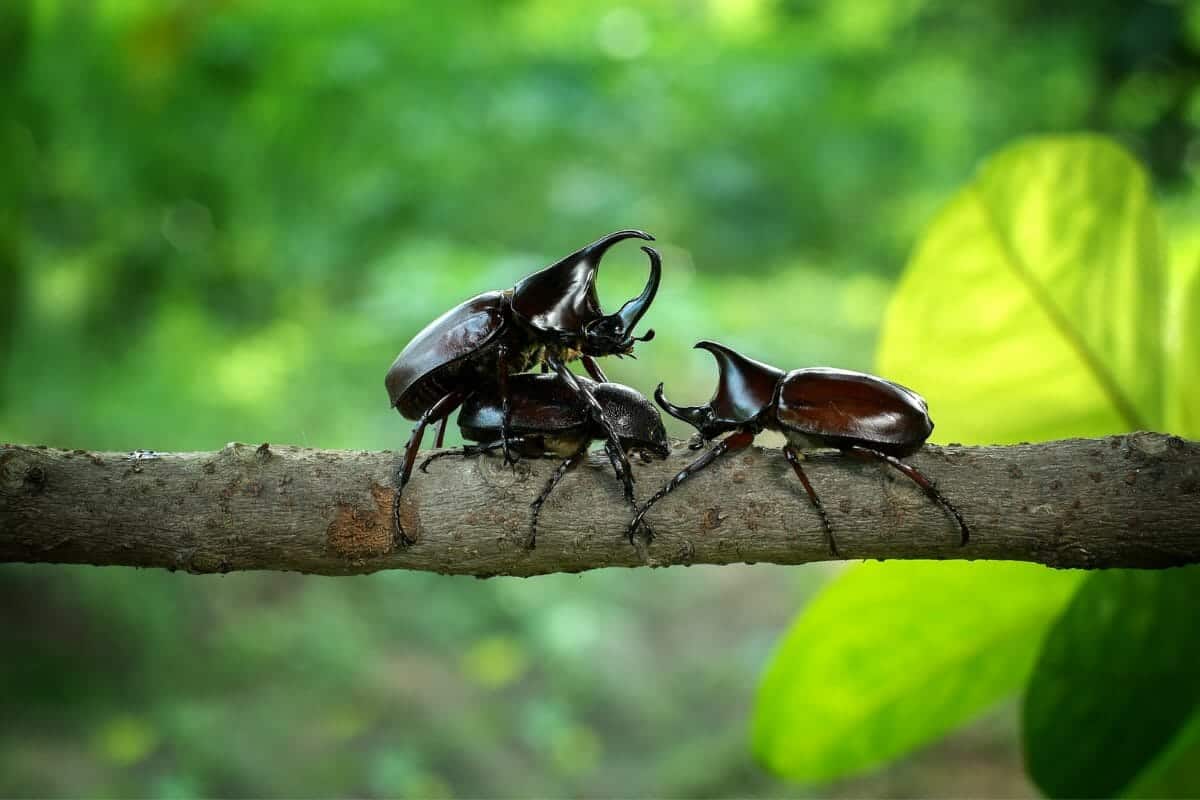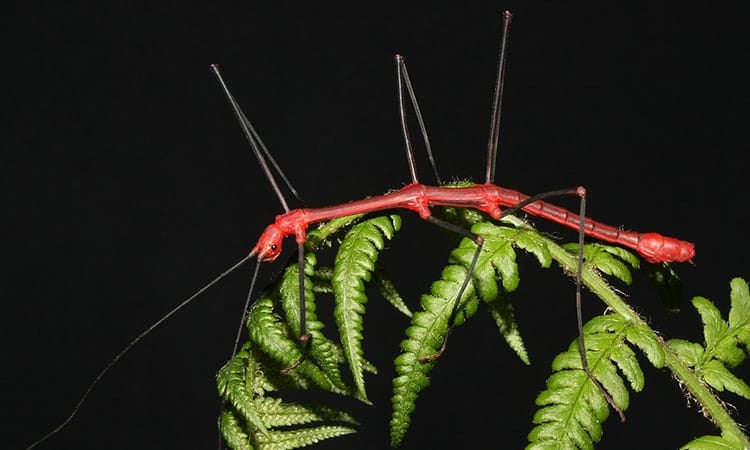Grylloblattodea: The Cold, Lonely World Of The Ice Bugs
The Grylloblattodea or Ice Bugs (sometimes called Rock Crawlers) are a small order of ancient and primitive insects, first discovered by E.M.Walker in the Canadian Rockies in 1914.
Since then about 34 species have been described; some from Japan, Korea, China and North America and one from Russia, but always from mountainous habitats 1500 to 6500 ft. Evolutionarily speaking they seem to represent a step between the Cockroaches (Dictyoptera) and the Grasshoppers and Crickets (Orthoptera), hence their scientific name a mix of ‘Gryllo’ and ‘Blatta’ .
The habitats they live in now are of little interest to other insects, thus they avoid competition with more modern insects; they have even been described as ‘living fossils’. They are the smallest extant order of insects, i.e. there are less species in the order than in any other order.
Many of the Grylloblattodea have very limited distribution, Namkungia magnus for example is known to live in an area only about 4 km² in size.
Grylloblattodea are hemimetabolous, i.e. they do not have a proper metamorphosis and the young look just like small adults except they have no eyes (Galloisiana notabilis) or greatly reduced compound eyes and no ocelli (Grylloblatta campodeiformis).
Their mouthparts are adapted to biting and chewing, their antennae are are filiform (long and thin) with 28 to more than 40 segments. The legs are all approximately equal, have large coxae and 5 tarsal segments. The female has a well developed ovipositor and both sexes have long, 8 segmented cerci. Adults are apterous (wingless) 2 to 3.5 cm (0.7 to 1.5 of an inch) long.
Ice Bug Ecology
The eggs of ice bugs are black and layed singly into the soil or moss. The eggs hatch after anything from a few months to 3 years.
The young go through about about 8 nymphal instars and take up to 7 years to reach maturity.
Hiding beneath stones during the day, they seem to prefer low temperatures of around 4C, which explains the long time it takes them to mature.

The adults are normally considered to be nocturnal, but some species have been reported as being active throughout the day as well. They are predaceous or omnivorous feeding on other insects and dead animal and plant matter.
Adults live for at least 1 year and females lay when they are about a year old. In Korea ice bugs have also been found in caves.
Grylloblattodea Taxonomy
There are only about 34 named living species in the order grylloblattodea. There are however 541 extinct/fossil species.
They are all placed in single family and divided between 6 genera.
- Grylloblatta which contains 15 species from North America,
- Galloisiana containing 12 species from Japan Korea and China,
- Grylloblattella containing 3 species from Siberia, China and Korea,
- Grylloblattina containing only 1 species G. djakonovi from Siberia.
- Namkungia containing 2 species, from Korea
- Permadax containing only 1 species from Russia (I think)
Bibliography
- New triassic Grylloblattids from Kirghizia (Insecta, Grylloblattida).; Storozhenko, S.; SPIXIANA 1994 vol. 17, no. 1, pp. 27-35
- Fine structure of the rectal pads in Grylloblatta compodeiformis (Walker) (Orthoptera: Grylloblattidae) with reference to fluid transport.; Jarial, M.S.; INT. J. INSECT MORPHOL. EMBRYOL. 1993 vol. 22, no. 1, pp. 25-40
- Permian Tiliyardembiidae (Insecta, Grylloblattida); Vilesov A. P. and Novokshonov V. G.; Paleontologicheskii Zhurnal, 1993, No.3, p.56
- Permian fossil insects of North-East Europe – New and little-known Ideliidae (Insecta, Plecopteroidea, Grylloblattida); Storozhenko S.; Entomologica Fennica, 1992, Vol.3, No.1, pp.21-39
- A new family of Triassic Grylloblattids from central Asia (Insecta, Grylloblattida).; Storozhenko, S. SPIXIANA.; 1992 vol. 15, no.1, pp. 67-73
- Permian fossil insects of North-East Europe – New Liomopterids (Grylloblattida, Liomopteridae and Phenopteridae); Storozhenko S.; Deutsche Entomologische Zeitschrift, 1992, Vol.39, No.1-3, pp.209-220
- Postembryonic development and homology of external genitalia in Galloisiana nipponensis (Caudell et King); (Notoptera: Grylloblattidae); Nagashima, T.; INT. J. INSECT MORPHOL. EMBRYOL. 1991 vol. 20, no. 3, pp. 157-168
- New fossil Grylloblattida insects (Insecta, Grylloblattida – Blattogryllidae, Geinitziidae) from permian and mesozoic periods of Asia; Storozhenko S. Y.; Paleontologicheskii Zhurnal, 1990, No.4, pp.57-65
- Fine-structure of malpighian tubules Grylloblatta compodeiformis (Orthoptera, Grylloblattidae); Jarial M. S.; Transactions of the American Microscopical Society, 1990, Vol.109, No.4, pp.329-341
- Galloisiana sofiae sp. n., a new species of Grylloblattodea from Northern Korea.; Szeptycki, A.; POL. PISMO ENTOMOL.1987 vol. 57, no. 2, pp. 257-262
- A new species of Grylloblattida from north-eastern Altai.; Storozhenko, S.Yu. and Oliger, A.I.; ENTOMOL. OBOZR. 1984 vol. 63, no. 4, pp. 729-732
- Biology of the Notoptera.; Ando, H. (ed.) 1982; KASHIYO-INSATSU CO., LTD.; NAGANO (JAPAN); 194 pp
- Sensory receptors on the mandibles and labrum of Grylloblatta campodeiformis Walker.; Baker, G.T.; ZOOL. ANZ. 1982 vol. 209, no. 5-6, pp. 341-344
- Notulae Orthopterologicae. XXXVIII. A new assessment of the male genital organs of the Grylloblattodea.; Baccetti, B.; MEM. SOC. ENTOMOL. ITAL. 1981 vol. 60, no. 2, pp. 49-60
- Taxonomy, distribution, and zoogeographic evolution of Grylloblatta in Canada (Insecta: Notoptera) (Grylloblatt., Grylloblattidae); Kamp, J. W.; Can. Entomol.,1979 Vol. 111(1), 27-38;
- Fine structure of oocyte and follicular cells during oogenesis in Galloisiana nipponensis (Caudell and King) (Grylloblattodea: Grylloblattidae); Matsuzaki, M. Ando, H. and Visscher, S.N.; Int. J. Insect. Morphol. Embryol., 1979 Vol. 8(5-6), 257-263
- Neural function in an alpine grylloblattid: a comparison with the house cricket, Acheta domesticus.; Morrissey, R. and Edwards, J. S.; Physiol. Entomol., 1979 Vol. 4(3), 241-250
- Numerical classification of the orthopteroids, with special reference to the Grylloblattodea. Can.; Kamp, J. W.; Ent., 1973. 105: 1235-1249.
- The taxonomy and distribution of the Grylloblattidae.; Gurney, A.B.; Proc. Ent. Soc. Wash., 1948. 50: 86-102.
- Grylloblatta, a living fossil.; Walker, E. M.; Tran. R. Soc. Can., 1937. 31: 1-10.
- On the behavior of Grylloblatta.; Ford, N.; Can. Ent., 1926. 58: 66-70.
- A new species of Orthoptera forming a new genus and family.; Walker, E. M.; Can. Ent., 1914. 46: 93-99.
Image license: Creative Commons




